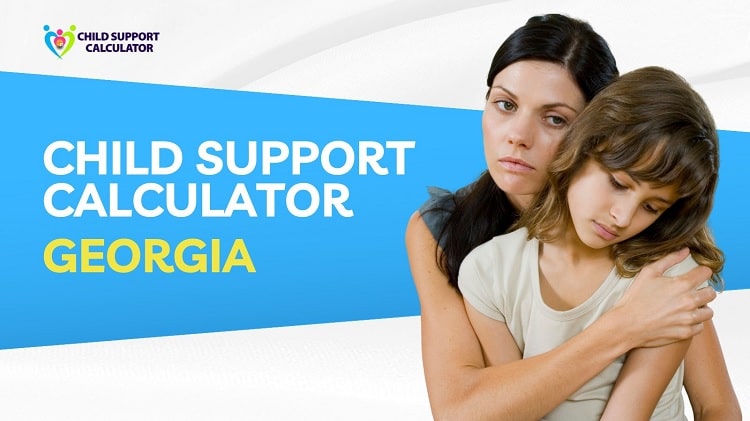Nm Child Support Calculator (New Mexico) – Guidelines – 2024
With the New Mexico child support calculator, the income sharing category approach is utilized to calculate child support payments. Payments are determined by the combined salaries of the parents as well as the number of children. If there is a greater combined income or if there are more children, payments are usually higher.

The amount paid or received by each parent is likewise proportional to their income share. The bigger your combined parent income percentage, the more you pay or get.
The amount of money you get depends on whatever parenting time group you fall into. A “shared” (equally distributed) care arrangement might result in lower payments.
New Mexico Child Support Calculator Basis
Child support in New Mexico is computed using the New Mexico Child Support Calculator based on the parent’s income as well as the custody and visitation schedule resulting from the divorce. The goal of child support is to distribute financial responsibilities for the children’s upkeep based on how much time each parent spends with them.
Typically, two situations play out. In the first case, one parent has “primary physical custody” or is the “custodial parent,” while the other gets visitation and spends less than 35% of the time as the children’s responsible or caretaker parent.
In the second situation, the parents are joint custodians and spend an equal or nearly equal amount of time as responsible or caretaker parents (at least 35 percent).
While each scenario necessitates a unique analysis by the court, in general, the parent who spends the smallest percentage of time in visitation or responsible caretaking time will end up paying child support because that parent is not physically present as much as the other parent to ensure the children’s well-being.
How Is Child Support Calculated in New Mexico?
Child support is calculated in New Mexico using the New Mexico child support calculator’s child support criteria, which are determined by the legislature and revised on a regular basis. Instead of an amount that the child’s parents feel is “fair,” the court utilizes a formula to assess support.When assessing child support, the court usually looks at both parents’ gross income (earnings before taxes).
The New Mexico Human Services Department’s Child Support Enforcement Division offers a copy of the child payment standards as well as the accompanying “Worksheets” that must be used to calculate support.
Whether you use Worksheet “A” or “B” will determine how much money one parent pays to the other. The worksheet to use is determined by the amount of time the youngsters spend with each parent. The proportion of households fall into the worksheet A category, which means that the children live with one parent (the “primary custodial parent”) during the week and with the other parent on weekends, holidays, and some vacation time (“non-primary custodial parent”).
Use Worksheet B if the children spend between 35 and 50% of the calendar year with the non-primary custodial parent. In a shared responsibility arrangement, parents effectively run two houses for their children and share responsibility for all parts of child-rearing costs, such as clothes and shoes, haircuts, school expenditures, extracurricular or sports activities, prom gowns, camps, and so on.
New Mexico Child Support Guidelines
- Health and dental insurance, as well as work-related child care, are essential requirements. A child support order may also pay unusual medical, dental, and educational costs, as well as travel and communication fees for long-distance visits or timesharing.
- Suppose the youngster is still in high school until the age of 18 or 19. (If a kid is unable to sustain oneself owing to a physical or mental handicap, child support continues indefinitely.)
- Assist pay for child support arrears, and the court may charge the parent with contempt and confiscate money in bank accounts or federal and state tax returns, garnish earnings or lay a lien on the property.
NM Child Support Worksheet
The expense of medical insurance for the children alone, as well as the cost of work-related childcare, are the foundations of child support.
Private school tuition, regular medical expenditures (orthodontist work, prescription medicine, co-pays for treatment, etc.), and the cost of automobile insurance for teenage drivers are sometimes listed as “extra expenses” on the child support spreadsheet.
If the parents live far apart, the cost of visitation transportation is sometimes averaged over a year and included on the child support worksheet.
In New Mexico, there are two types of child support worksheets: A and B. Each worksheet is tailored to a certain situation:
- Worksheet A is used when the kid resides with one parent for the majority of the year and spends less than 35% of the year with the other parent.
- Worksheet B is used when the kid spends about or exactly equal amounts of time with each parent.
Child Support Calculations Based on Parents’ Employment
When one or both parents are self-employed, defining “gross income” for child support purposes might be difficult. Look at the “total income earned” minus the “reasonable and regular” business costs that were required to create that revenue, which is not the same as tax deductions.
Depreciation of equipment, for example, is frequently utilized to reduce the amount of taxes owing, but it is not permitted to reduce the income available for child support purposes.
The law assumes that a parent is striving to reach his or her full potential. It is possible to “impute income” to a parent who is “underemployed” or “unemployed by choice” for child support purposes.
In poor economic times, this may be a challenging area to navigate since a parent may be laid off and forced to take a lower-paying job to make ends meet. On the other hand, some parents quit higher-paid jobs and refuse to hunt for new ones in order to avoid paying child support.
Child support is expected to be automatically withdrawn from the paying parent’s wages and channeled to the receiving parent through the Human Services Department’s Child Support Enforcement Division (CSED). If the parents agree that they do not want their children to go through CSED, they can inform the court of their decision.
If the parents agree to forego CSED, child support is frequently paid by direct deposit to the receiving parent’s bank account rather than the traditional method of mailing a check. For tax purposes, child support is not deducted from the paying parent’s income and is not included in the receiving parent’s income.
What Else Does the Child Support Order Cover?
On New Mexico’s child support worksheets, there is an “extra costs” option. The following are the most usually accepted extra expenses:
- Expenses incurred as a result of long-distance visits (plane tickets, gasoline for driving the children to the other home, and long-distance phone calls)
- Frequent psychological counseling for a youngster (not covered by insurance)
- When both parents agree that their child should attend a private school, orthodontia private school fees, and car insurance for teenage drivers.
Bottom Line
Child support payers in New Mexico have high earnings and limited parental time. Parents who (a) work less, (b) spend most of their time with their children, and (c) have a high earner as the other parent, on the other hand, are the largest beneficiaries.
In most cases, one of two possibilities applies. In the first, one parent has “primary physical custody” or is the “custodial parent,” while the other gets visitation and spends less than 35% of the time as the responsible parent. In the second situation, the parents have joint physical custody and share an equal or nearly equal amount of time as responsible parents (at least 35 percent).
The New Mexico child support calculator rules apply to Albuquerque, Las Cruces, Rio Rancho, Santa Fe, Roswell, and Farmington, as well as the rest of New Mexico. Support payments may be modified by the parents’ agreement or at the discretion of the court presiding over your case.
Faqs
What do I do if the non-custodial parent lives in another state?
Apply for CSED’s services. The New Mexico CSED might refer a matter to another state for legal action under the Uniform Interstate Family Support Act (UIFSA). UIFSA also provides for interstate income withholding and the arrest of a non-custodial parent who tries to evade paying child support by fleeing to another state.
What is the child support percentage in NM?
The income of the non-custodial parent accounts for 66.6 percent of the total combined income of the parents. As a result, the non-custodial parent is responsible for $666 a month in child support, or 66.6 percent of the entire obligation. Child support in New Mexico is calculated using the income sharing technique (percentage of income approach).
Is Child Support Tax Deductible?
Child support is not considered income by the receiving parent, and the paying parent cannot deduct the amount of child support.







